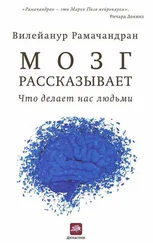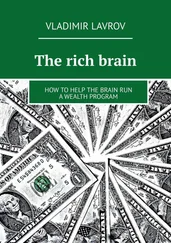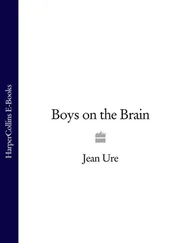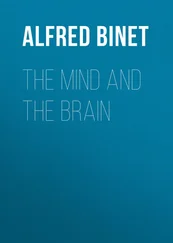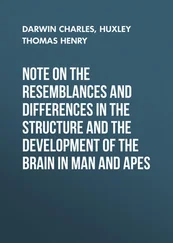Cotard’s syndrome as exaggerated form of, 167
Freudian view of, 161–162
galvanic skin response and, 164–165
gaze direction and, 168–169
memory and, 169–172
self and, 171–173
caricature, 287n–288n
Carroll, Lewis, 124, 158, 277n
cars:
body image and, 60–61, 136–137
in rearview mirrors, 120
cartoons, 2, 72, 108–109, 111
of Thurber, 86, 86 , 87
cataracts, 87, 104–105
catastrophic reaction, 129, 149
cats, seeing vs. imagining of, 88, 109–110
Cecilia (denial patient), 130
cell body, 8
central (rolandic) sulcus, 9
cerebellum, 9, 9 , 16 , 45, 178
cerebral cortex, 9 , 10, 13, 16 , 116, 178, 264n
lying and, 278n
Penfield homunculus and, 25–27, 26
cervix, cancer of, 218
Chafe, Wallace, 291n
Chalmers, D., 294n
Charcot, Jean Martin, 295n
Charles Bonnet syndrome, 87–88, 104–112, 274n–275n
Charles II, king of England, 91, 103
Chemical History of a Candle (Faraday), ix, xichess playing, 250
child abuse, 225
children, 279n
autistic, 195, 286n, 292n
in Charles Bonnet hallucinations, 105–106
phantom limbs in, 57, 269n, 270n
Chopra, Deepak, 221, 249
Chudamani, Viveka, 39
Churchland, Patricia, 175, 275n, 296n
Churchland, P.M., 296n
cingulate cortex, 163 , 178
cingulate gyrus, 201, 208, 228, 249, 252
Civil War, U.S., vii, 23
Clark, Astley, 200
Clark, Stephanie, 268n
Cobb, S., 269n
cognitive neuropsychiatry, 3
cognitive science, 272n
coherence and continuity, 133, 134–135, 147, 280n, 282n
cold, 33–34, 50
color blindness, 72–73, 230
color vision, 11, 64, 72–73, 79–80, 81, 102, 110, 111, 185, 230, 264n, 272n, 278n
computer model of brain, 56, 277n
conceptual filling in, 103–104, 110
conceptual self, 253–254
confabulation, 154, 155, 254, 283n
connectionism, 10
consciousness, 76, 77, 103, 137, 156, 227–257, 296n–298n
as epiphenomenon, 235
selective function of, 116–117, 276n
see also qualia; self continental drift, 223
contingency, evolution and, 209, 292n
contradictory evidence, visual system and, 91, 93, 93
convergent evolution, 292n
Cooper, Larry, 139–140
Copernican revolution, xiv, 156
cordotomy, 33
corneal damage, 105
corner-of-a-square experiment, 94, 96 , 102–103
corpus callosum, 9, 10, 12, 16 , 163 , 178 , 280n
stroke in, 12–13
Cosmides, L., 288n
cosmology, xiv, 156, 157
Cotard’s syndrome, 167, 248
courtship ritual, of birds, 68, 70
couvade syndrome (sympathetic pregnancy), 218
creativity, 7, 197–198
humor and, 206, 291n
of Thurber, 85–87, 86 , 112
Crick, Francis, xii, 175, 186, 199, 229, 234, 263n, 271n, 285n
Critchley, M., 276n, 278n
Cro-Magnon, 190, 191
Cronholm, B., 267n
Cutting, J., 278n
cyclophosphamide, 220
Cytowic, Richard, 297n
Daly, M., 288n
Damasio, A., 278n, 284n
Damasio, Hanna, 274n, 284n
Darwin, Charles, ix, xi, xvi, 68, 70 , 133, 189–191, 211, 224, 227, 240, 286n, 291n
Darwinian revolution, 156
Darwinism (Wallace), 189
Davies, Paul, xii, 256–257
Davy, Humphry, ix, xiDawkins, Richard, xii, 197, 286n
D.B. (Drew), 75–77, 81
death:
Cotard’s syndrome and, 167
laughter and, 199–200, 207
decapitation:
blind spot and, 91, 94
Capgras’ syndrome and, 166
scotoma and, 103
defense mechanism(s), viii-ix, 130–133, 136, 152–156, 280n–281n
humor as, 154, 207
in normal people, 131–135
rationale behind, 134–135
rationalizations as, 152, 154, 155, 156
reaction formation as, 139, 153–154, 155
repression as, 135, 143–144, 146, 148, 149, 153, 155, 161, 282n
selection of, 155
Dehaene, S., 265n
de Kruif, Paul, xiidendrites, 8
denial, 50, 127–153, 155–157, 253–254, 278n–283n
depth of, 143, 281n–282n
global, 142
location of brain lesions and, 142–143
memory and, 148–150, 283n
mock injections and, 151–152, 283n
neglect syndrome and, 133, 139–141, 144
normal vs. exaggerated, 131–132
Dennett, Dan, xii, 80, 254, 272n, 286n, 296n, 297n
depression, 3, 13, 182, 217, 280n–281n
depth, 110, 111
Descent of Man, The (Darwin), 70, 211
Deutsch, Anthony, 289n
Deutsch, G., 280n
Devil’s Advocate, 135–136
Dewhurst, K., 285n
DeYoe, Ted, 272n
diabetes, 285n
diabetic retinopathy, 87, 105
dichotomania, 279n
Dickens, Charles, viiidigestive system, 264n
disease, sensory identification of, 6–7
Disraeli, Benjamin, 211
DNA (deoxyribonucleic acid), 81, 234, 246, 263n, 264n, 272n, 294n
Dr. Jekyll and Mr. Hyde (Stevenson), 224
Dodds, Mrs., 127–129, 132, 136, 138–139, 154
Dolan, Ray, 141–142, 280n
dorsal rhizotomy, 27–28, 33
dreams, 3, 147, 195
REM sleep and, 147–148, 282n
dyscalculias, 17–19, 265n, 277n
dyslexia, temporary, 101
ears, 37–38
hallucinations and, 105, 106
nystagmus and, 144–146
Eddington, Sir Thomas, 222–223
Edelman, Gerald M., 109, 278n
Edward, B., 286n
eggs and cavities images, 68, 69 , 70 , 271n
ego, defense of, 130, 135
Einstein, Albert, 4, 115, 174, 195, 235
Ekman, P., 278n
Electra complex, 161
electricity, magnetism and, 4–5
Ellen (neglect syndrome patient), 113–117, 120–125
Ellis, Havelock, 289n
Ellis, H.D., 284n
embodied self, 247, 250
emotion, 116, 117, 282n
appropriate, 115, 166
Capgras’ syndrome and, 162–167, 170, 172, 284n
eye contact and, 168
limbic system and, 13, 16 , 17, 116, 162–164, 163 , 167, 171, 177, 182–183, 185, 247, 248–249
right hemisphere and, 133–134, 280n
self and, 247–249
temporal lobe epilepsy and, 180, 182, 187
empathy, 61, 218, 250
epilepsy, 15
grand mal seizure of, 179
temporal lobe, see temporal lobe epilepsy
epistemology, experimental, 3, 151–152
erections:
of gay bashers, 153
health and, 197
phantom, 25, 37
Esmerelda (denial patient), 130
estrogen, 294n
evolution, 156, 157, 224
contingency and, 209, 292n
convergent, 292n
Lamarckian, 190
natural selection in, 175, 183, 184, 189–191, 196, 201, 209–211, 235, 286n, 288n, 292n–293n
perception and, 68, 70, 76, 103, 271n
of self-deception, 278n–279n
evolutionary psychology (sociobiology), 183–184, 201–202, 288n–291n
executive self, 249–250
experimental method, Galilean, 24, 266n
eye movement, 38, 144, 145, 271n
rapid (REM), 147–148, 282n
eyes, 6, 73, 74, 168
retina of, 70, 71 , 74 , 81, 89, 115, 274n, 275n
face, 33
brain mapping and, 26–31, 26 , 30, 32 , 34, 40, 267n–268n
phantom, 25
face cells, 77–78
face recognition, 10, 64, 77–78, 169
Capgras’ syndrome and, 162–167, 172, 284n
Fregoli syndrome and, 171
prosopagnosia and, 162, 284n
false alarm theory, 206, 207
Faraday, Michael, ix, xi, 4–5, 263n
Farah, Martha, 266n, 278n, 284n
feces, disgust for, 202
Fedio, Paul, 248, 285n
feet:
brain mapping and, 26, 26 , 27, 35, 36, 266n–267n
Читать дальше


